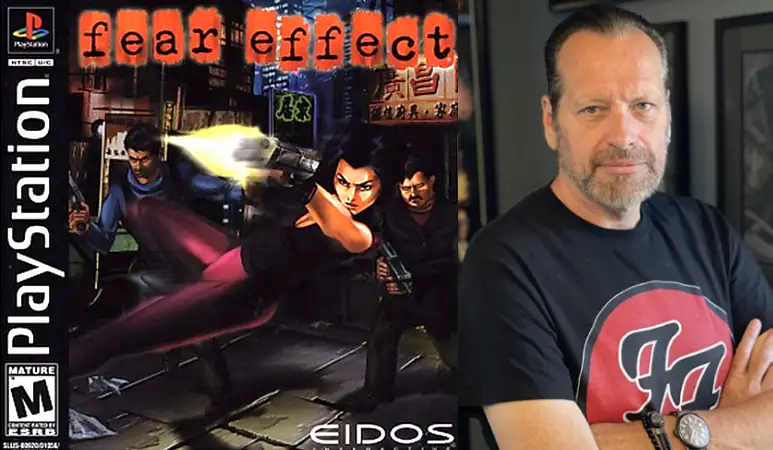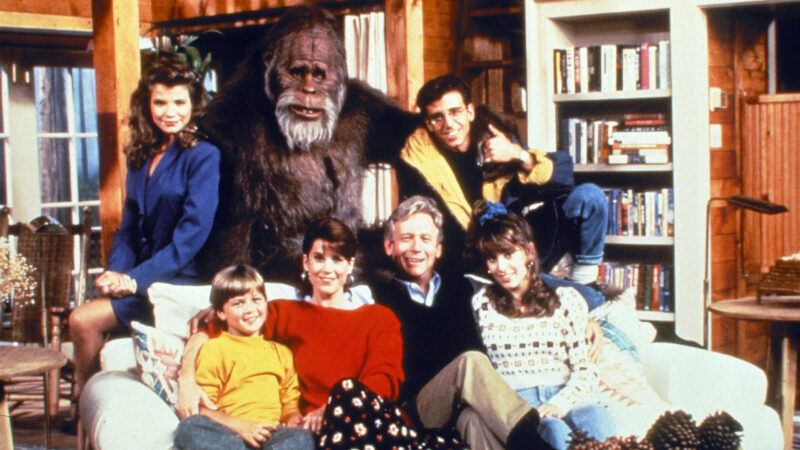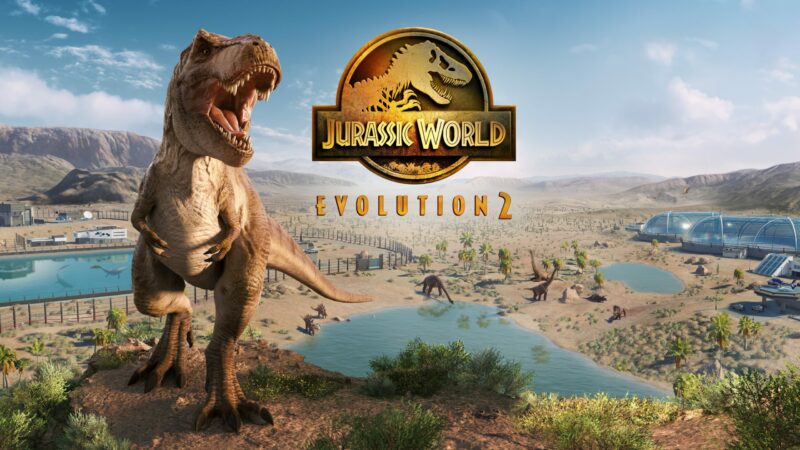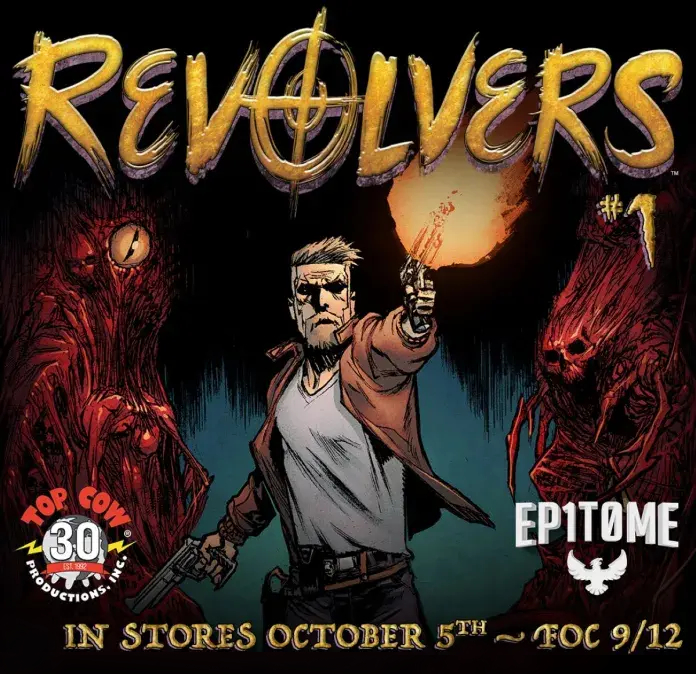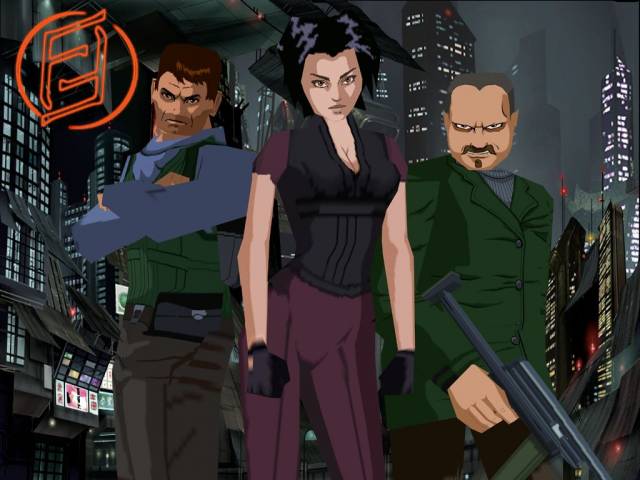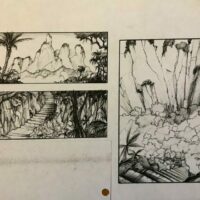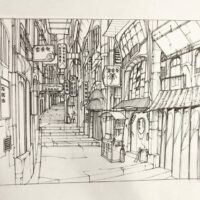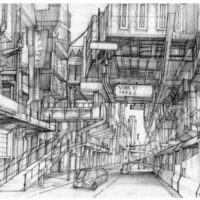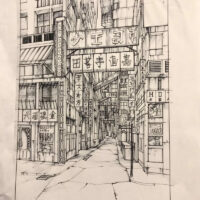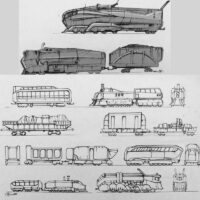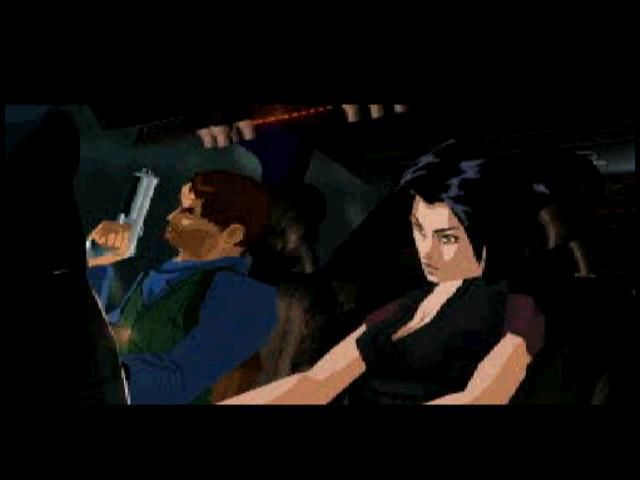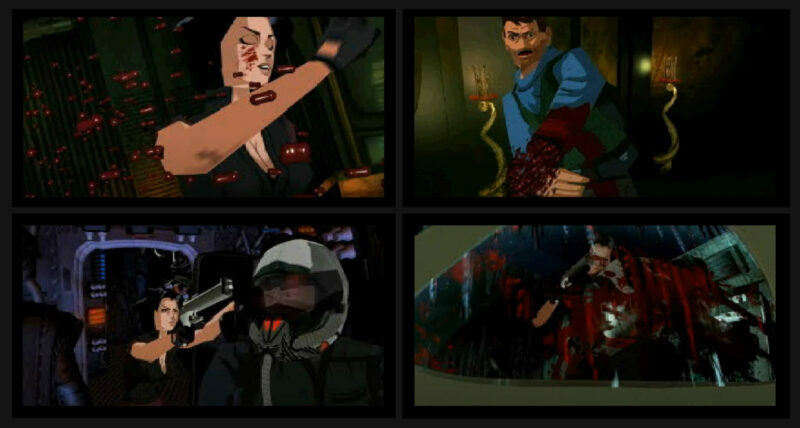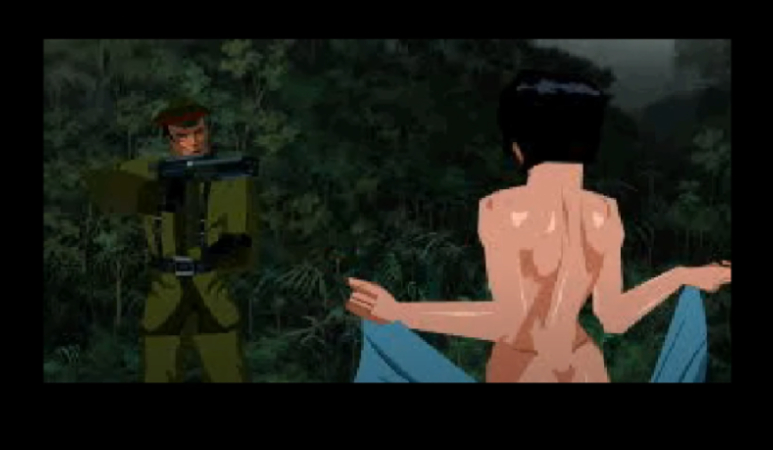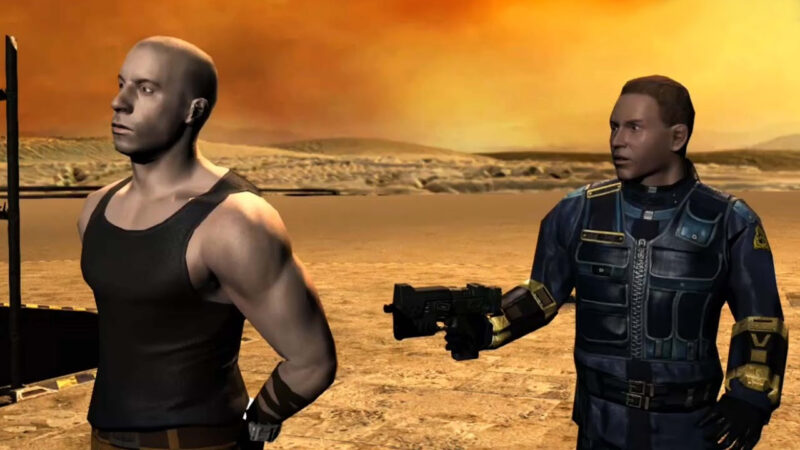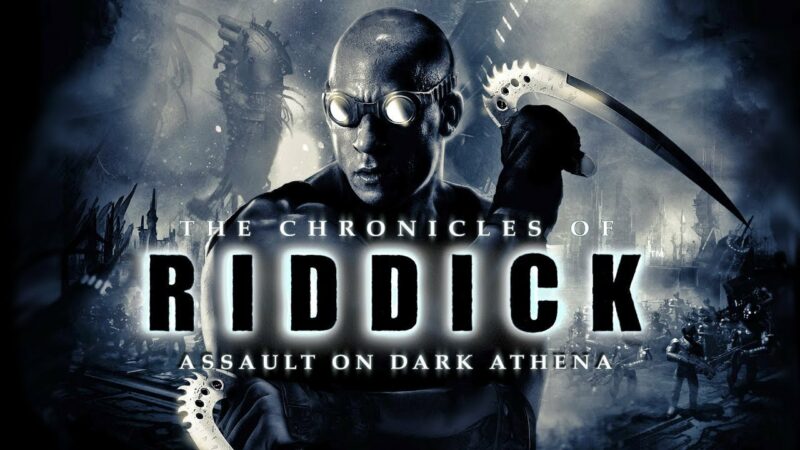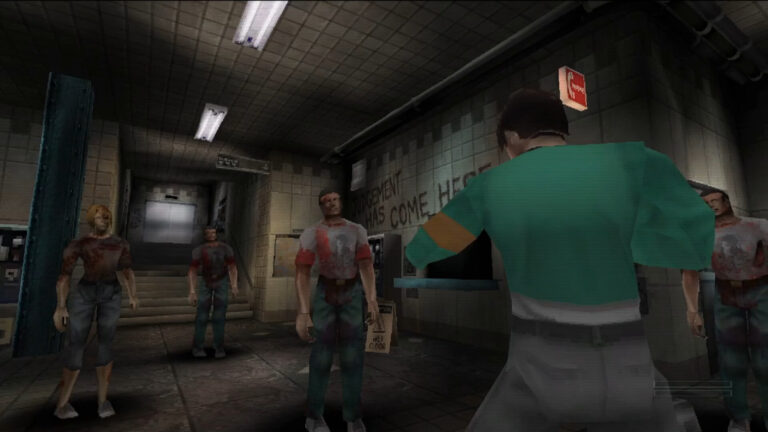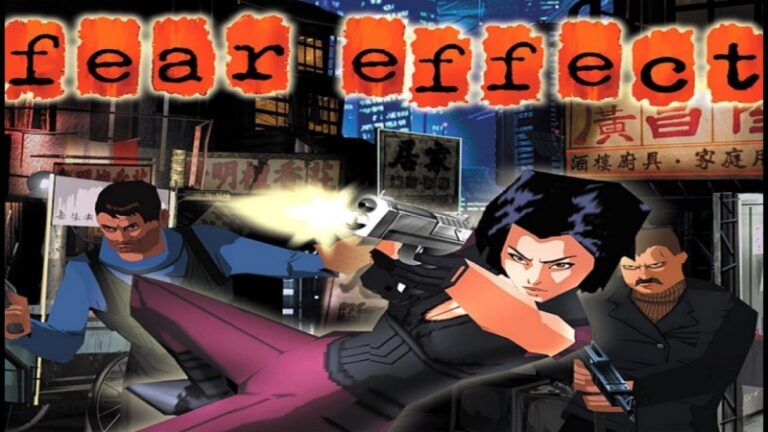On February 24th, 2000, the action-adventure horror game Fear Effect was released in North America for the original PlayStation. Developed by Kronos Digital Entertainment and published by Eidos Interactive, the game would go on to become a cult classic, spawning a prequel in 2001, a Kickstarter-backed sequel in 2016, and an upcoming reimagining for modern platforms.
Fear Effect takes place in a dark, futuristic version of Hong Kong. Wee Ming Lam, the daughter of a powerful Triad boss has disappeared, and a team of mercenaries plans to find the girl and hold her for ransom before her father’s men can locate her. What begins as a simple snatch and grab, becomes a mission more important than any of them could have imagined.
Throughout the game’s four discs, players alternate between the three main characters Hana, Glas, and Deke on their mission to retrieve Wee Ming. In addition to taking enemies head-on, players sometimes have the option to sneak up on them for a stealth kill. Players can also interact with a variety of NPCs and solve puzzles logically integrated with the world of the game. The game has a slick anime aesthetic and features cel-shaded characters against looping full-motion video backgrounds, rather than static pre-rendered ones that were the standard at the time.
The game’s title refers to the player’s life bar, a “Fear Meter” that resembles a pulsing EKG. When the player is damaged, the green line of the EKG will pulse faster and turn red. Since there are no health power-ups in the game, players must regain health by performing well in stressful situations, like doing well in gunfights, solving puzzles, or sneak-killing enemies.
Fear Effect recontextualized the traditional action-adventure and survival horror genres by embracing its mature themes and exploiting its unique gameplay and visual style. Its cast of morally grey antiheroes and ultra-violence helped to set it apart from the crowd, even in a landscape where M-Rated games were becoming the norm.
In the twenty-plus years since its release, Fear Effect has lost none of its potency. Its story and gameplay still hold up after multiple playthroughs and the game is just as compelling as when it was first released.
We recently sat down with the writer and director of Fear Effect, John Zuur Platten, to talk about his prolific career, how he came to be involved in the videogame industry, and his role in the development of the genre-bending action-adventure survival horror game.
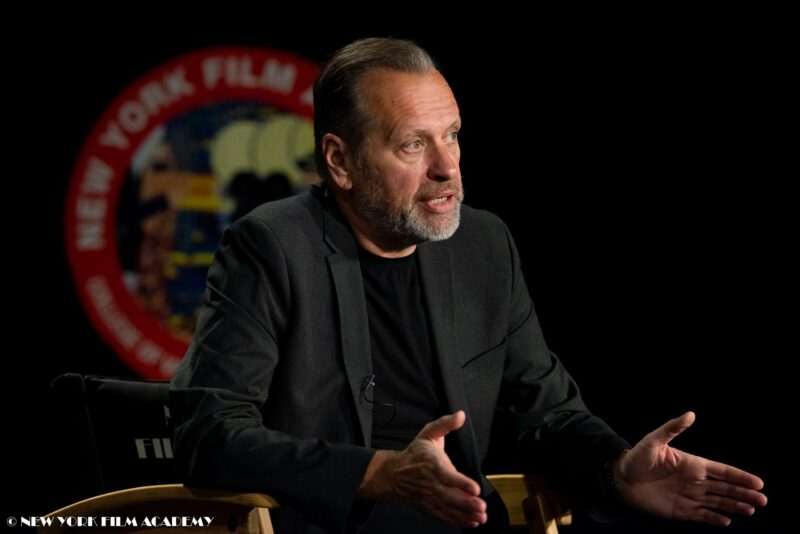 ROH: Hi John! Thanks for accepting our request for an interview.
ROH: Hi John! Thanks for accepting our request for an interview.
JZP: Yeah, my pleasure!
ROH: You’ve enjoyed a twenty-year career in the entertainment industry writing for video games, film, television, digital media, and books. That’s a lot of hats. Please introduce yourself and tell us a little bit about yourself.
JZP: My name is John Zuur Platten, but everybody calls me JZP. My background was starting in traditional media. I actually started as a tour guide at Universal and then moved from being a tour guide to being below the line in television and film production. I worked eight years doing production coordinator work and then eventually moved my way up to post-production and associate producer on a few projects.
One of the shows I was working on was a show called Harry and the Hendersons and I thought I could write a script. I had never tried it before, but I’d been internalizing scripts for about six or seven years. Back then we had to Xerox stuff, so every week I was literally running 500 copies of scripts. I had to read them to break them down and send them off to various department heads and that sort of thing. So, I went to one of the producers of the show, and I said, “Hey, can I take a crack at one of these?” and they said, “Oh, OK. Write a spec first and let’s see how you do.”
JZP: So, I ended up writing a fun spec for Seinfeld. George and Jerry go to Atlantic City because Jerry’s performing there. George has seen Jerry’s show so many times he doesn’t want to see it again, so, he’s sitting in the bar. While he’s sitting in the bar waiting for Jerry’s show to be over, this beautiful woman sits down alongside him and takes out a cigarette (this is back when you could put cigarettes on TV), and he doesn’t have a lighter. So, she’s holding it out, waiting for the light. But he notices there’s a Zippo on the bar a few stools over, so he reaches over and grabs the Zippo and he lights her cigarette. While he’s doing this, this really big guy sits back down at the bar and goes, “Where’d my Zippo go?! Who would have the gonads to steal from me?” It turns out he’s a big mafia guy. So, the whole adventure becomes George and Jerry trying to get the cigarette lighter back without the mafia guy knowing.
That script turned out to be really good for me because after that producer read it, he goes, “OK, I’m gonna give me an assignment.” So, I ended up writing three episodes of Harry and the Hendersons. While I was doing that, I went above the line.
While I was producing visual effects for Sega in the early days of the Sega CD they said, “God, we get such great stuff from you guys. It’d be great if you could do a game for us.” Everyone looked at me and said, “John, you know how to write stuff, write a game.” and I was like, “OK!”
I love games and have been a gamer all my life but had never really attempted to design or write one before. But I ended up creating this game called Tomcat Alley, which turned out to be a big success for Sega, and I was on my way. Eighty games later and many years later, I still do it to this day.
My current project is Jurassic World Evolution, 1 and 2. I love the Jurassic Park franchise and I’ve been fortunate enough to have worked on it now for almost five years. We bring in all the original cast for voice performance, so I get to work with Laura Dern, Bryce Dallas Howard, Jeff Goldblum, and Sam Neill. It’s really, really amazing not only getting to write for them but then being in the booth with them and hearing them perform and bring my words to life. I tell everybody, as a writer, you can only ever get it to 80% if you’re writing for film or TV or anything to be performed. You really need the actor to bring all their talents to bear to elevate the work and really take it across the finish line.
ROH: It must be a thrill to hear your lines coming out of their mouths.
JZP: Oh, my god, and to have them say very nice things about me and my work. Now that they’ve worked with me for a number of years, they’re like, “Oh, JZP, great! We know there’s not gonna be any problems.” If I could have told the much younger me that was sitting in the theater watching the original Jurassic Park that one day, I’d be part of the franchise and actually add to the canon, I wouldn’t have believed it.
ROH: That’s a huge franchise.
JZP: I’m so grateful to be a part of it. The team that creates the games at Frontier Developments is great. They’re smart, really talented people, and know the property inside and out. We have about 120 Dinosaurs now. Sometimes, they’ll send me a dinosaur that I have to write and do some research on, which can be challenging, but I can always call them, and they’ll tell me what it looks like, how to pronounce its name, etc. I’m just like, thank God! They’re a really passionate group who turn out really great products. I consider myself fortunate that I get to work with them and the team at Universal. It’s amazing.
I’m also working on A Quiet Place game for Paramount and there are a few unannounced games that are coming soon.
In addition to that, I also write comic books. I have a comic out called St. Mercy and another comic coming out from Image and Top Cow on October 5th called Revolvers. It’s something probably more in line with your fan base. It’s John Wick meets Hellraiser; ghosts with guns. It’s super Grindhouse, it’s super over-the-top, and I think people will really dig it. We’re getting really good early feedback on it.
My biggest real flex of the past few years is that I’ve worked for DC and Marvel. I’ve done Ghostbusters. You name a big franchise, I probably touched it in some way. I was also one of the original people at Niantic, which, for five and a half years did the augmented reality mobile game Ingress.
The guy who started Niantic was a guy named John Hanke. He was the guy that created Google Earth and Google Maps. He also had a company named Keyhole that he sold. Anyway, John comes from this small town in Texas called Cross Plains. I don’t know if that resonates with you, but that’s Robert E. Howard’s hometown, the creator of Conan the Barbarian. His mother actually runs the Robert E. Howard museum which is at Howard’s family house. So, I got up to date on a lot of Conan-related stuff through John.
ROD: Oh, wow!
JZP: Niantic basically built Pokémon GO on top of Ingress, so I was there when the world changed in 2016. That was a real amazing moment of gaming coming together with a social and economic component. There was a worldwide phenomenon that happened there for about six weeks. The game still does very, very well for Niantic. I’m hoping my stock options make for a nice retirement!
ROH: You eventually wound up at Kronos Digital Entertainment, the developer of the Fear Effect series. Take us through the creative process for the original Fear Effect. What were your inspirations for the story and your goals for the game?
JZP: The original Fear Effect was an amazing opportunity. I was in-house at Kronos, which was owned and run by a guy named Stan Liu. Stan was a really creative guy from Hong Kong. Unfortunately, he passed away a couple of years ago from cancer, but he was a phenomenal talent. In addition to being the owner of the company, he was an artist, but he knew he wasn’t a writer, and knew that his design skills were OK. That was an issue for him. So, he sat me down and said, “Look, I have this idea. I want to do this Cyberpunk game and I want to set it in a world similar to a place called Kowloon Walled City.
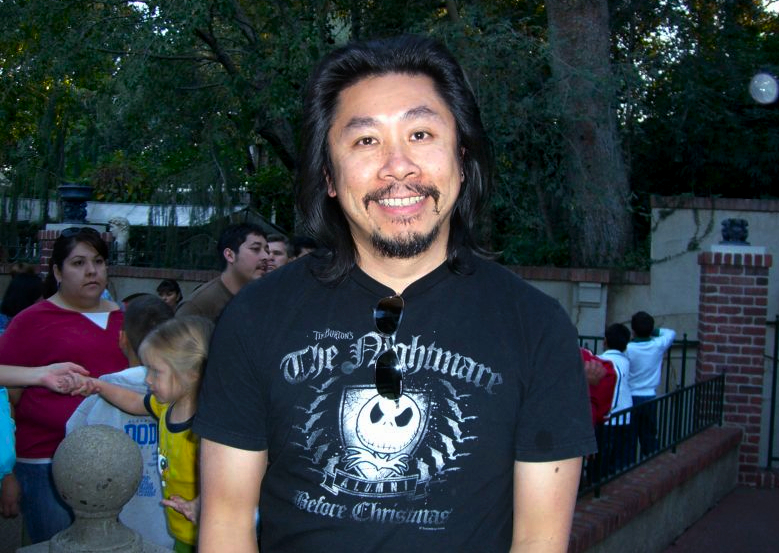 Stan Liu was the founder of Kronos Digital Entertainment and worked on both Fear Effect and its prequel, Fear Effect 2: Retro Helix. He sadly passed away in 2017.
Stan Liu was the founder of Kronos Digital Entertainment and worked on both Fear Effect and its prequel, Fear Effect 2: Retro Helix. He sadly passed away in 2017.
Kowloon Walled City was a part of Hong Kong before they tore it down. It was a place where lawlessness reigned. If you know anything about Hong Kong, you know it’s a very crowded and expensive city. So, what happened was these people who were disadvantaged in Hong Kong found these two or three city blocks and they just took them over. They started to build an encampment, which grew and grew and grew. Eventually, it became ten or twelve stories high. It was just this makeshift city.
You can see these amazing photos that people took inside of it, where it’s just walls, hallways, and hundreds of extension cords running from one place to the other. Everything is chaos. It was a bit like an ant colony for humans, but completely off the grid, nothing legal. It was visually stunning and had this very dystopian quality that you see in a lot of great science fiction. It was sort of the Asian version of a Blade Runner world. Stan said, “That’s where I want the story to be. You figure it out.”
JZP: At the time we were at Eidos and Lara Croft was obviously their big female star. What we knew going in is we couldn’t create a character that competed in any way with Lara Croft or nothing would move forward. We had to be distinct and unique. I’m a big fan of anime and the cel-shaded look, so I thought, what if we go in an entirely opposite direction? Lara Croft is basically a hero. Let’s create an anti-hero who’s basically a villain but put her in a situation where she’s fighting even darker forces than what she would normally face.
So, I created Hana Tsu-Vachel, who’s a mercenary gun for hire. She works with Royce Glas and a guy named Jakob “Deke” Decourt. I had a trio of characters and I thought wouldn’t it be cool if they were trying to kidnap this young girl and hold her for ransom? But the girl they’re trying to kidnap just happens to be the daughter of the Chinese King of Hell. I thought, OK, now I’ve got something. Let’s run with it and see where it takes us. That was the essence of how Fear Effect came to be.
It ended up being a huge game. It was on four discs, which was unheard of for the PlayStation One, and it tried a lot of different things people hadn’t done before. For me, it was as much an interactive experience as a game experience. It was very much story-driven. We conceded early on that we were going to tell an interactive narrative that was cinematic in nature. You never want to compromise gameplay, you want to make sure people are having fun and playing the game, but when push came to shove, we always pushed towards making the art and story the best they could be. I wouldn’t say we compromised on the game. We did what we could, but our focus was on trying to create something that was unique and different.
ROH: Did you ever get any pushback from Eidos?
JZP: Well, early on they were questioning a lot of what we were doing because we were using three characters, we’re making these massive worlds, and they were very concerned about Hana. They said we got to make sure there’s no conflict with Lara Croft and we want to make sure she fits in our universe.
JZP: We had a couple of amazing artists that worked on the project. One of them was a guy named Pakin Liptawat. Pakin was an amazing environmental artist. I think to this day he still does environmental art for games and TV. You could give him half an hour and he could draw you an amazing cityscape. He had drawn all of these really cool cityscapes of Hong Kong, sort of “New Hong Kong.” We also had a guy named John Paik who designed all the characters. John had given a sort of cel-shaded look to all the characters. But we couldn’t get Eidos to bite. So, I went to both artists and said, give me a poster with John’s characters standing in front of Pakin’s landscapes and let’s see what we get. So, they worked together for about half a day and put it together. When everybody looked at it, we all went, “Holy shit, this looks amazing!”
We took it to a local printer and had 24 x 36 movie posters made with Eidos’ logo and the Fear Effect title in it, so it looked like a movie poster. I think we even put poster credits at the bottom. I had those printed up, put them in a poster tube, and sent it to Eidos. I didn’t tell them it was coming; they’re not expecting it. I just sent it to them. Two days later, the phone rings and it’s the guy who at the time was running Eidos, and he said, “You son of a bitch. This is perfect.” I said, “I know, right?” And he goes, “Yeah, OK, you’re approved. Go, go, go.”
ROH: Awesome! Sometimes you just have to convince them, right?
JZP: Yeah, sometimes that’s what it takes. Everybody who looked at that poster went, “Yeah, that’s the game.” It was Pakin’s genius, it was John’s genius, it was Stan’s support, and it was my devious nature to try to do an end around to unblock things, and it worked. It was a moment that really brought the project to life. I still have one of those posters in my garage.
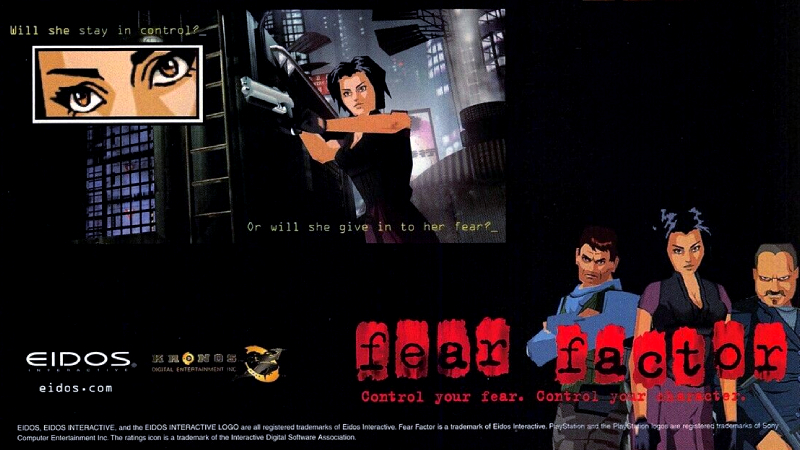 ROH: Is it true that the game was originally titled Fear Factor?
ROH: Is it true that the game was originally titled Fear Factor?
JZP: Fear Effect was not the original name. It was indeed Fear Factor. However, we changed the name because one of the representatives of the band Fear Factory saw the game at E3 and put us on notice that they thought we were infringing on their name. Rather than fight it, we decided to change it.
ROH: One of the things that stands out about Fear Effect is its eclectic group of characters. There’s a strong sense of each of their personalities and motivations, especially the main characters. Can you speak about the creative process involved in bringing antiheroes Hana, Glas, and Deke to life?
JZP: I wanted to have a diverse cast of characters. I wanted to have people that were varying shades of grey. I didn’t want just good guys and bad guys, I wanted everybody to be a little bit on the evil spectrum in some way or at least on the villain spectrum.
If I had to compare it to something in the present day, it was very much like John Wick. John Wick’s a villain. He really is. He’s an assassin, he’s a murderer and yet in his world, he gets to be the hero because everybody else is some version of him, only worse. That was the way I approached the narrative for Fear Effect. I wanted it to be dark and a little bit edgy. There are a few controversial things we did in there that you probably couldn’t do today but that was where my thinking was, and fortunately, everybody else was on board with it.
ROH: Fear Effect’s world is an evocative fusion of Eastern mysticism and Western Hollywood action sensibilities. What was it about blending these two divergent styles together that appealed to you?
JZP: I was always a fan of Hong Kong action movies. John Woo was a big influence on me, and I was also a big fan of the Wushu films that came out of Hong Kong in the 60s and 70s. You had a lot of really amazing films produced by the Shaw Brothers Studio like The 36th Chamber of Shaolin (1978), and One-Armed Swordsman (1967).
So, there was an influence sitting within me ready to embrace this. But then on top of that, I wanted to make sure it fit into a traditional Western storytelling structure. I knew that although anime and that more Asian-style storytelling does have a core fanbase if we were going to be able to go wide, it had to appeal to a much larger audience. So, that’s where it came from.
ROH: Well, that kind of nicely dovetails into my next question. Can you talk a little bit about the mature content and themes present in Fear Effect? I remember being pretty shocked by the level of violence in the game when I first played it. Did you and the developers set out to make the game provocative on purpose or was that just a natural outgrowth of the story and themes?
JZP: People have talked to me about this and other projects I’ve done over the years and asked me, “Are you just doing this for the sake of doing it?” No, never. I’m wanting to serve the story. If we’re going to embrace a specific genre, and we’re going to say this is the way we’re going, then I’m not going to half-ass it. I’m going to be committed and deliver what I can for fans that like this kind of entertainment. I’m never afraid to try things and put stuff out there as long as it’s true to what we’re doing story-wise and narrative-wise.
JZP: There’s a big controversy in the one scene where Hana drops her top to distract one of the villains and everyone was like, “You know, maybe we’re going just a little too far.” And I said, “OK, maybe. But maybe not.”
ROH: Maybe that’s when you know you’re onto something, right?
JZP: Right! Maybe what makes logical sense for Hana to do in this situation is to use all of her charms. She needs to distract the guard, and how is she going to distract him? Well, she’s wearing a towel. Why not just drop the towel?
ROH: And it’s consistent with her backstory.
JZP: Right, absolutely. It was consistent with the fact that Hana’s been naked in front of a lot of people, including people she just met. She’s able to use all the skills and tools she has at her disposal. I thought this is going to be controversial, people will talk about it, and it will get noticed. Every review at the time mentioned it, but that’s OK because it was true to her character and what we were creating.
The comic book that I mentioned to you, Revolvers, is really dark. I mean, it’s really dark. It’s an over-the-top, extreme, bloody, violent piece of work. Not because that’s what I set out to do, but because once we decided that we were going into this certain reality, once we said we’re going to do a Hellraiser-like property, you can’t do that at PG-13. You just can’t. You either do it and you honor what you’re creating, or you don’t.
What I tell everybody, is that with everything I create, I honor. If I’m creating a world, I’m going to do all the research I can on that. If I’m creating characters that are of different ethnicities, genders, or religious beliefs, then I spend a lot of time doing research and really diving in, so that when I create that character, I’m not just skimming the surface. I want to make sure that character is real, as real as I can make them. Then I want to make sure that I’m honoring that character. Hana’s not in Fear Effect just because I needed a female lead. Hana’s in there because she made the most logical sense for all of the story beats that were playing out, including the confrontation at the end, which really has a maternal component and a paternal component as an association. That’s why you need this character.
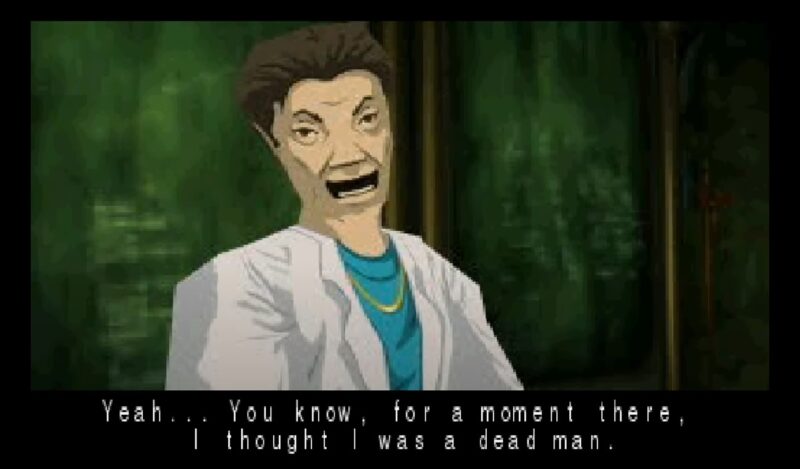 ROH: Well, one of my favorite characters in the game is Jin (AKA Yim Lau Wong). Although he doesn’t have much screen time, he’s a character with a lot of personality who ends up having a big impact on the story. How did you create the character of Jin? Was he inspired by anyone in particular?
ROH: Well, one of my favorite characters in the game is Jin (AKA Yim Lau Wong). Although he doesn’t have much screen time, he’s a character with a lot of personality who ends up having a big impact on the story. How did you create the character of Jin? Was he inspired by anyone in particular?
JZP: There was a person that worked at Kronos who was slightly older and was an artist. They had an interesting personality trait that I found really unique, which was that they spoke perfect English, but were more comfortable speaking in Mandarin. So, you would get these long, interesting riffs that would be combinations of both. They had a personality that was a little more distant. Not that they weren’t friendly, but they were distinct from everybody else. I thought that’s kind of an interesting character. What if I age them up ten years and use this as the start of something?
I wanted our own kind of joker/trickster character within the story and Jin provided a perfect opportunity to do that. This is one of those characters that you think is a toss-away character when you meet them and then they play a significant role in the story. I didn’t want to shine too much of a spotlight on the character because it was going to be too obvious. If you meet the Joker in scene one, you know you’re going to meet the Joker at the end of the story. So, I needed to make sure that the character felt a little bit like an NPC that may or may not have any big ties. I wanted a little bit of the everyman quality to that character, but I also wanted it to pay off when the reveal happens. It was a bit of a balancing act, but that was the essence of how that character came to be.
ROH: What you set out to do was executed flawlessly.
JZP: Oh, thank you.
ROH: He’s literally a toss-away character, right? He gets shot out the window of a high-rise building, and you think that’s it for this guy.
JZP: I try and do that with characters. It’s setting things up and paying things off and structuring stories in such a way that when you’re doing something interesting on page one, it’s being delivered on in page seventy. That’s the essence of really being a professional. Revolvers is a bit of a murder mystery, as well. I wouldn’t call it a whodunit, but the answer to the mystery is on the first page, yet everybody that gets to the end of that book goes, “Oh, shit, I didn’t see it!” I tell them, “It’s right on page one! Go back and look.” If you can pull that off and do that in an effective way, it usually works out great.
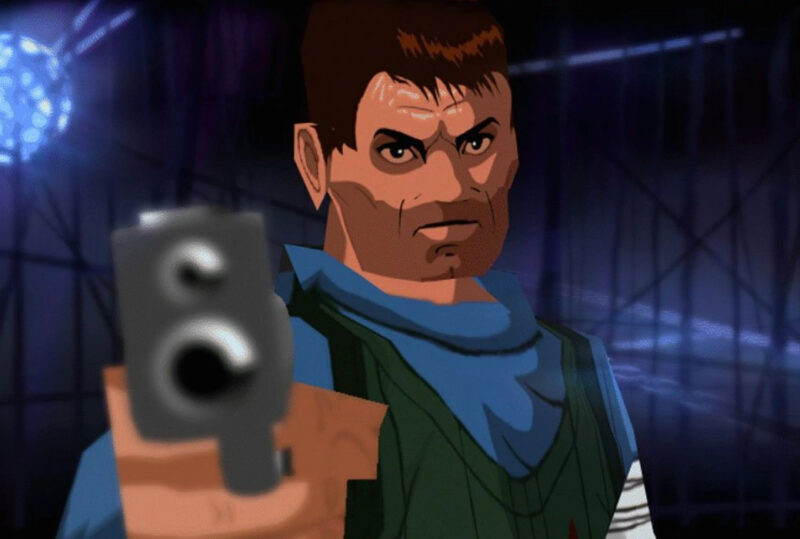 ROH: Nice. So, were you involved in casting the voice actors? And if so, what was the casting process like for the main cast?
ROH: Nice. So, were you involved in casting the voice actors? And if so, what was the casting process like for the main cast?
JZP: Yeah, all the main cast were either people that I was friends with that were voice actors or were people that were recommended to me. Braeden Marcott (who was Miguel Marcott back then, before he changed his name a few years ago) who voiced Glas, is a longtime associate. In fact, he did some VO work for me about three or four months ago. The actor who did Deke, with an Australian take on his voice (Anthony De Longis), was also the top bullwhip trainer for all of Hollywood. Elyse (Dinh) was recommended to me by Braeden and when I heard her, I said “Yeah, she’s perfect.” Everybody else was either recommended or somebody that I knew.
ROH: Nice. So, were you involved in casting the voice actors? And if so, what was the casting process like for the main cast?
JZP: We did the recording sessions in a studio we had set up inside of Kronos. We did the sessions over I think about two weeks. It was a lot of stuff to record. Then we started putting it together with the voices. Before we had our cast, we did a scratch track, which was basically just people in the office doing it. I think I ended up doing Deke and everybody else was doing various characters. It was just for timing and to help the animators and make sure the scenes were playing out. But once we got the actual performances in, then it really started to jump.
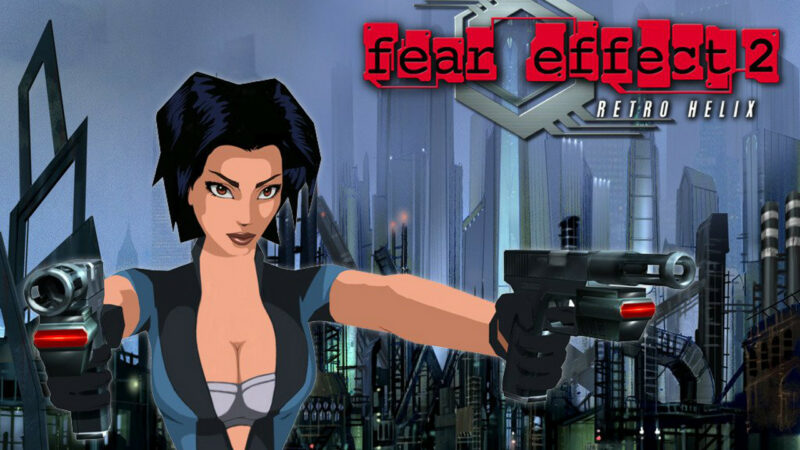 ROH: A prequel for the game was released one year later entitled Fear Effect 2: Retro Helix (written and directed by Stan Liu) but you weren’t involved in that one. Had you already left Kronos by that point or was there another reason you weren’t involved?
ROH: A prequel for the game was released one year later entitled Fear Effect 2: Retro Helix (written and directed by Stan Liu) but you weren’t involved in that one. Had you already left Kronos by that point or was there another reason you weren’t involved?
JZP: No, I had left Kronos right after Fear Effect 1 was delivered and was already working on another project. I was not involved in Retro Helix. I wasn’t involved in the creation of the Rain character. There were discussions of having Hana have a relationship character, but I was not involved in Rain or any of those elements.
ROH: Do you have any opinions on the second game? Would you say it was faithful to the world that you and Stan created?
JZP: Oh, yeah. I would say it was faithful. I think, back to this idea of pushing the boundaries for the sake of pushing the boundaries, that Retro Helix did that a little more than I would have. If I was there, I would have probably had them dial back on that a bit. But overall, I thought it was true to the property.
ROH: Would you ever consider returning to the series for any potential future entries?
JZP: I love the Fear Effect property. Always have. I have touched it over the years in various fashions. I still to this day love the characters and love the world. I hope something more happens with it.
ROH: I love them, too. I was in college in the early 2000s when they came out and was just at the right age to embrace them. One of the cool things about Fear Effect is that it’s influenced by a lot of things like Hong Kong, Blade Runner, and cyberpunk stuff. But it’s one of those unique combinations where the whole is greater than the sum of the parts. It’s its own thing at the end of the day, even though it has a lot of familiar elements combined and that was always cool.
JZP: Thank you very much. Fear Effect is not ashamed to wear its influence on its sleeve. I think we created something that was unique and different, certainly, for its time. It was doing things that people hadn’t considered or weren’t trying. It pushed a lot of envelopes. Ultimately, it’s a project for which I’m very, very proud of having been able to have been a part of it.
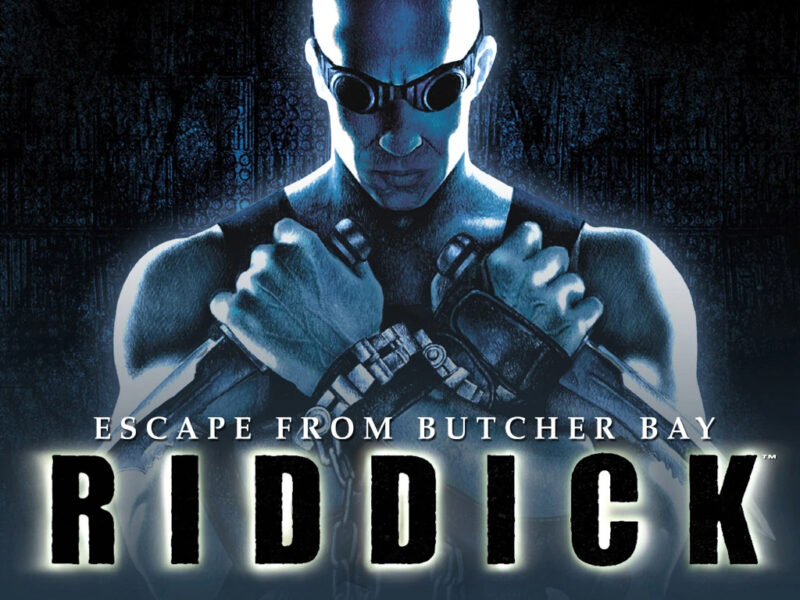 ROH: You also wrote the story for the incredible The Chronicles of Riddick: Escape from Butcher Bay game that was released for the PC and the original Xbox in 2004. Since its release, it’s been hailed as one of the best games in its genre. Can you tell us how that project came about? Was it a challenge to try and adapt director David Twohy’s already established world and tone?
ROH: You also wrote the story for the incredible The Chronicles of Riddick: Escape from Butcher Bay game that was released for the PC and the original Xbox in 2004. Since its release, it’s been hailed as one of the best games in its genre. Can you tell us how that project came about? Was it a challenge to try and adapt director David Twohy’s already established world and tone?
JZP: We were brought into it by a guy named Cos Lazouras, who is a longtime friend. I’ve worked with him on a lot of projects over the years. Cos was working with Vin Diesel on all of his game-related stuff. Vin had a company called Tigon Studios and they really wanted to do a great Riddick game.
They had brought on Starbreeze, who had already put together some really amazing gameplay and done some other stuff, but nobody could crack the nut of the story. They said to me and Flint Dille, a longtime collaborator if we could come in and see if we could crack this thing. So, we met with Vin, talked through it with Universal, and saw where they were going.
There was a moment in the second Riddick movie script that had a reference to the Butcher Bay triple-max slam as a one-off sentence. We had this really great producer on the project named Peter Wanat and we told him that maybe that line is our way in. Pete loved it. He said, “Here’s how I want it to go: At the beginning of the game, Riddick gets caught and thrown into Butcher Bay and at the end of the game he escapes. Figure out the middle and figure out the rest.” That’s how Butcher Bay came to be.
After we got the first draft done, we spent some time with Vin. We had been warned in advance that Vin shows up when he wants to show up and he’s going to have lots of notes. We were all prepped for that meeting. Then Vin shows up, and he couldn’t have been nicer. He sat down and goes, “I love the script. I’m looking forward to doing it. I think we’ve got it.” Then he geeked out on my partner because Flint knew Gary Gygax and was a big D&D guy. We got through the interview process really easily. Vin was happy with the script and we were off and running.
ROH: Awesome! That was another game where all the reviews mentioned how polished the story was and how consistent it was with the world. Obviously, the gameplay was great, but everything flowed into everything else. The story worked with the gameplay.
JZP: Thank you. Part of that was talking with Vin and making sure we understood what he thought of the character. Because there’s the written character and then there’s the performed character. We wanted to make sure that we understood everything he was doing with that character, what made sense to him, and what he was thinking as he was performing that character. Vin is one of those guys that spends a lot of time thinking about this stuff.
As we talked through it, we made this punch list of who is and isn’t Riddick. We took note of things like how Riddick never says please, and he never says thank you. Riddick never asks, he always tells. If Riddick wants you to open the door, he’s not going to say, “Could you please open that door?” he’s just going to tell you to open the door. Once we started to figure that out and get those rhythms, then the character started to come right back onto the page in a really interesting way.
Vin has a voice director he uses for all of his recordings named Jack. So, we go to record the script, and I don’t know if you have ever seen a game script before, but they look the same and different than a film script. In a game script, you might have just four or five pages of nothing but dialogue, one line after another, because it’s either incidental dialogue or dialogue for a specific cutscene.
Anyway, Vin starts going and it’s sounding great. I mean he’s just sounding on and the lines are working, but he’s just going through pages. Normally an actor will give you a line, stop, give you another reading of that line, stop, maybe give you a third take. Then the voice director says, “OK, we got that one. Let’s move on to the next one.” But Vin is just going nonstop. Jack is talking to the audio engineer, going, “Take two. That one. OK, circle that take.” and he’s just keeping up with Vin as they’re going. I heard one line that I didn’t like, so I nudged Jack and said, “That one, again,” and he goes, “It’s already marked, don’t worry.”
JZP: Vin gets about four or five pages in and then he stops. We have this glass partition window that we can see the performer through. He takes his head up from the music stand, leans out from the microphone, and goes, “I’m making you guys look good, right?” and I said, “Yes, sir. You’re making us look great!” Then he goes, “But, I want to redo this one line” and it’s the exact line that both Jack and I looked at. So, he was already in his own head going, “Yeah, I nailed that one. These are the ones I want to redo.” It was at that moment, that I just said, “OK, I love this guy.” He knows what he’s doing, he’s got the rhythms, he knows the character and he trusts the people.
He went through the entire 200-page script. I think maybe we changed three or four lines, which is amazing for a talent of his size and stature to just record it as written. That was a thrill. That led to a longtime relationship with Vin that continues to this day. So yeah, it’s fun.
ROH: Yeah. Incredible, incredible game. It’s one of my favorites. Everyone still has a reverence for it. It even got a remaster a couple of years ago so that just proves that it has stood the test of time.
JZP: When we came back, we did Assault on Dark Athena. I’ve had conversations with all the people that have been involved in the production of the films and everyone says the games are canon. What more could you want from your writing than that? That’s amazing. I hope one day we can do another Riddick.
ROH: Yeah, that’d be awesome. I think David Twohy is still working on a fourth one. We’ll see what happens.
JZP: Yeah, I hear rumors.
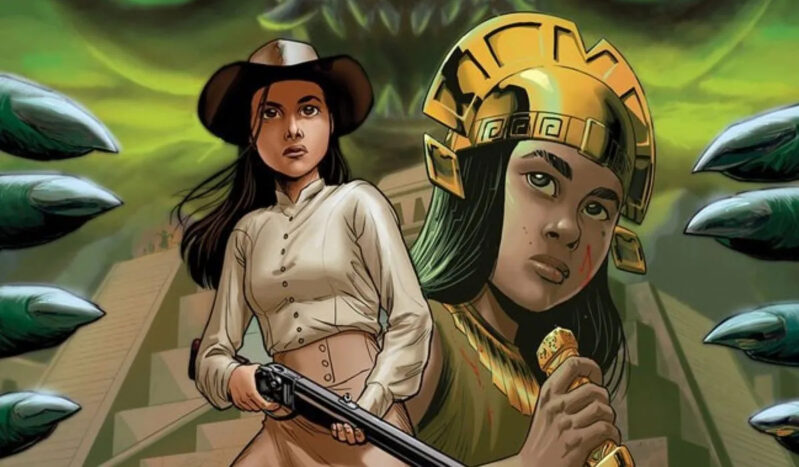 ROH: You mentioned your comic series, St. Mercy earlier, which is illustrated by artist Atilio Rojo: a story that pits the Incan Empire against the American West, and features two strong, determined young women who must defy authority and ultimately embrace their destiny. What motivated you to create this comic?
ROH: You mentioned your comic series, St. Mercy earlier, which is illustrated by artist Atilio Rojo: a story that pits the Incan Empire against the American West, and features two strong, determined young women who must defy authority and ultimately embrace their destiny. What motivated you to create this comic?
JZP: The comic really came about because I had been thinking about doing a Western for a while. I’d always wanted to do Western and write a young female lead. I grew up in a predominantly Hispanic neighborhood and knew a lot of young women who were like Mercy. I wanted to write a character that goes back to some of the characters that I interacted with when I was a teenager, a lot of my first loves. I wanted to create a character like that.
I had been bouncing it around in my head for a few years and was surfing the internet doing some research on another project when I came across some mummified children that were part of the Capacocha ritual of the ancient Incans. There were these really weird, disturbing, and beautiful photographs of these sacrificed children up in the Peruvian mountains above the snow levels, basically preserved.
I thought to myself, there’s something here. How do I make this work? So, I started to work through some ideas. I thought this is all about faith and belief. When I look at those images, I’m looking at them through a modern, Western lens. But I want to look at it through their eyes. If I’m looking at it through their eyes, they’re rock stars. These children were literally treated like gods on Earth for a year. They were taken out of very difficult lives in their villages where they were already full-time workers as children. Now they’re in temples, sitting up in the throne room, if you will, of Incan society and treated like a god for a year. Then they are pumped full of coca leaves, so they’re not quite sure what’s happening, and sacrificed.
What would that mean, if you really believed in your God? If you really believed you were going to meet your gods? Wouldn’t that be one of the most glorious days of your life? I thought, now this is something. So, I started to put that together and thought, but what if it all went wrong? Because, for me this is interesting, but who pulled the rug out from underneath our characters?
ROH: That’s where the drama comes in, right?
JZP: That’s where the drama comes in. People asked me once to explain what I do in five words or less and I said, I create people in problems. That’s what a storyteller does. You create characters and you create problems to put them in. I thought, what’s the problem here? The problem is that a young Incan girl believes in the God, but the God doesn’t believe in her. The gods and the shamans of the temple are doubting her because she’s not ready to be sacrificed. What would happen if that went wrong?
The connection between that young woman, an Incan girl named Toctollissica, and the title character Mercy is that because it goes wrong, all the gold used in the sacrifice gets cursed. It then gets stored away, kept hidden, and passed from generation to generation.
Mercy and her father are the latest keepers of the gold. Unfortunately for them, a group of outlaws finds out about the gold and goes to take it for themselves, which sets in motion a whole bunch of insanity and leads to demonic children running around in the wild west. I paced the story so it starts out more traditional, but by the time you get to book four, it’s a completely insane, over-the-top Grindhouse slaughter-fest.
ROH: I read the first issue and I really liked it. I noticed that it was not just well written, but the subject matter was treated in a way that didn’t seem comic book-ey. It felt like a good story, but in comic book form, versus say, a novel or something like that. I’m looking forward to the other ones.
JZP: Thank you so much.
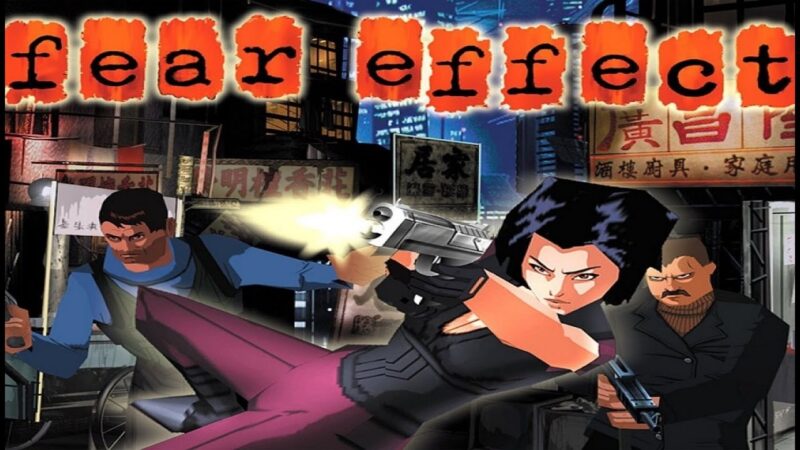 ROH: The original Fear Effect celebrated its 22nd anniversary earlier this year. It’s a game that has stood the test of time and is as compelling and entertaining now as when it first came out. Is there anything you’d like to say to all the fans out there who have enjoyed your work for all these years?
ROH: The original Fear Effect celebrated its 22nd anniversary earlier this year. It’s a game that has stood the test of time and is as compelling and entertaining now as when it first came out. Is there anything you’d like to say to all the fans out there who have enjoyed your work for all these years?
JZP: Yeah, thank you! Thank you so much. When you work on any project in the entertainment industry, but specifically when you work on games, they’re such a collaborative team effort. There are so many other people that are involved in the process, even creatively, besides me. But I am eternally grateful that I get to do this for a living, and the only reason I get to do it for a living is because of the fans and the people that go and buy the games, love the games, and embrace the games. That for me is something that is irreplaceable, as far as I’m concerned in my life. It’s what keeps me going.
I always think of somebody who may be grinding away at a less than premium job. Their dollars matter and they’re willing to take those dollars and convert them into something that I helped create, worked on, or delivered. I take that really seriously. I want to make sure that they’re entertained. My job is to entertain you and I want to make sure that I’m always doing that. Hopefully, you’ll allow me to keep doing it.
ROH: I’d like to personally thank you for Fear Effect. It’s meant a lot to me over the years. I still go back to it. I’ll be making breakfast or something and I’ll just watch the cutscenes like a show and they still hold up. They’re still so great.
JZP: Well, thank you very much.
ROH: Thank you so much for taking the time to speak with us!
JZP: Very much appreciated. Great meeting you!
Special thanks to John Zuur Platten for graciously taking the time to be interviewed.
About the Author: William Lockwood is the Editor in Chief of Rely on Horror. He’s also a freelance writer and illustrator living in South Carolina. When he’s not playing video games and watching movies on the big screen, he’s working on writing and illustrating his own fantasy series. Samples of his work can be seen on his DeviantArt and Instagram pages.
This interview has been edited for length and clarity.

